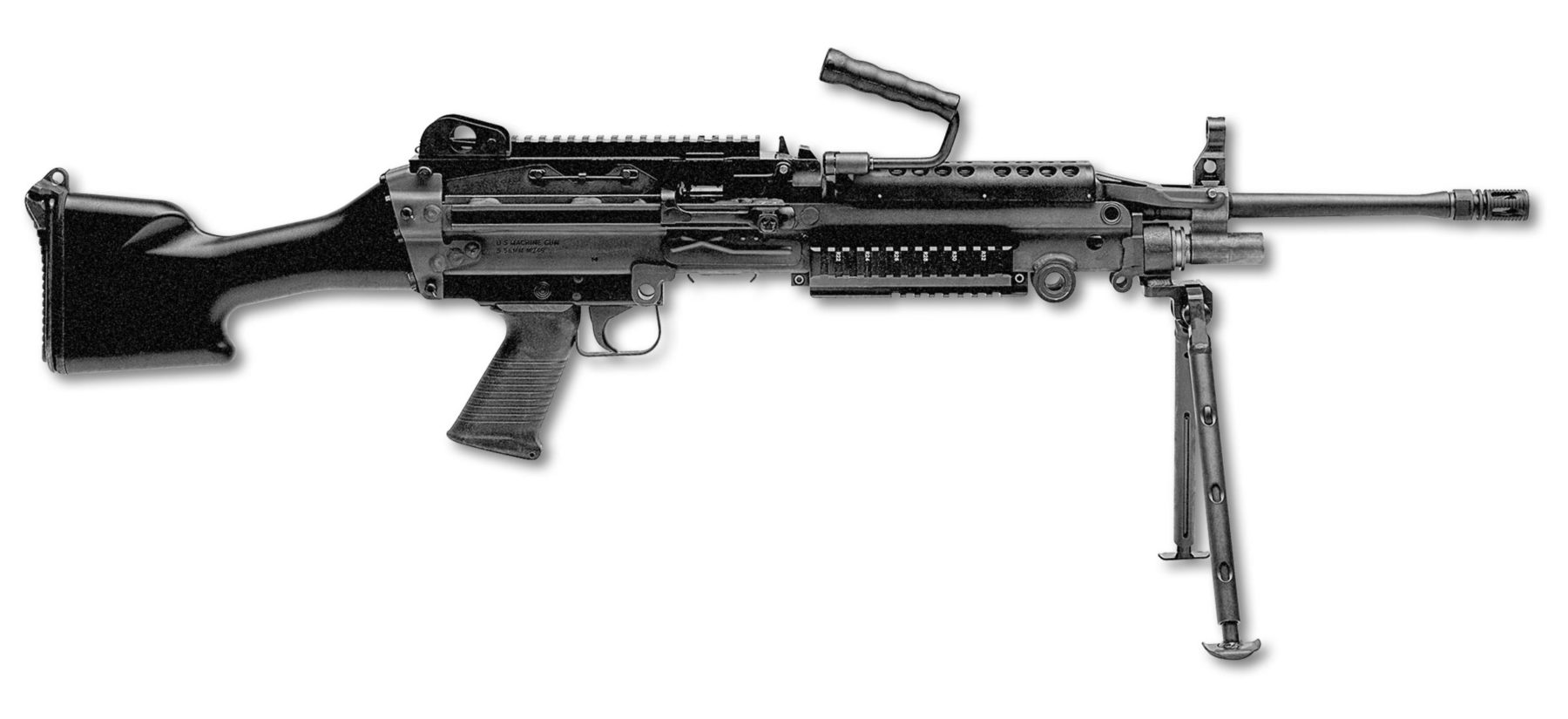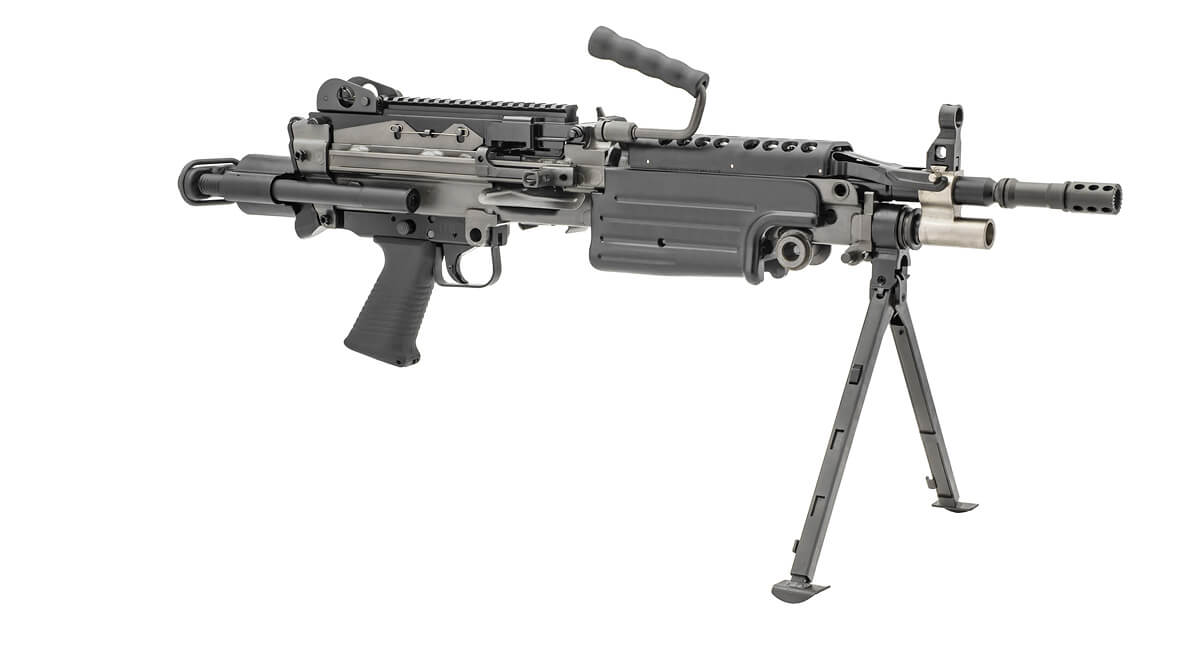

How a Belgian light machine gun reshaped American infantry tactics—and eventually became one of the most iconic civilian-legal belt-feds in the United States.



Few firearms have influenced modern small-unit tactics as profoundly as the FN M249 SAW (Squad Automatic Weapon). Designed to give American infantry squads the sustained suppressive fire they desperately needed, the M249 has become a symbol of battlefield reliability for over four decades.
Today, its legacy lives on not only in military service around the world but also through the FN M249S—the semi-automatic, civilian-legal version that brings the SAW experience directly to American enthusiasts.
In this article, we’ll explore the complete history of the M249, from its origins in Cold War testing to its combat debut, battlefield performance, and eventual transformation into an iconic collector’s firearm.
During the 1960s and 70s, U.S. infantry squads relied heavily on the M60 machine gun for suppressive fire. While the M60 was powerful, it was heavy, required a crew, and wasn’t ideal for fast-moving infantry. The Army needed a weapon that was:
Lightweight
Easy for a single soldier to operate
Belt-fed
Chambered in 5.56 NATO
Capable of sustained automatic fire
This led to the Squad Automatic Weapon (SAW) trials, where multiple designs competed to fill the new role. FN’s entry—the FN Minimi, developed in Belgium in the 1970s—quickly began to stand out.
After extensive endurance and environmental trials, the U.S. formally adopted the FN Minimi as the M249 SAW in 1982. It offered several advantages:
Dual feed system: Belt feed or STANAG magazines
Lightweight for the era
High cyclic rate
Strong reliability across sand, mud, water, and extreme temperatures
Its ability to maintain heavy, sustained fire while still allowing a rifleman to maneuver was a major shift in squad-level tactics.
Since its adoption, the M249 has seen continuous U.S. service across multiple conflicts:
The M249 provided mobile suppressive firepower during close-quarters operations in dense jungle and urban environments.
Troops praised the weapon’s ability to lay down volume fire over long distances across open desert terrain.
The M249 became a staple in clearing operations, mountain warfare, and urban engagements due to its portability and fire rate.
During the Battle of Mogadishu—the event depicted in Black Hawk Down—the M249 played a critical and well-documented role. When U.S. Army Rangers and Delta operators were pinned down by overwhelming militia forces, the light yet powerful M249 provided the sustained suppressive fire needed to hold intersections, cover medical extractions, and break encirclements.
Key points from the battle:
Operators used M249s to defend crash sites.
Its rapid rate of fire allowed teams to hold overwhelming numbers at bay.
The weapon’s reliability, despite extreme heat and continuous firing, prevented catastrophic overruns.
This engagement cemented the M249’s reputation as one of the most important small arms in modern American warfare.
As the M249’s battlefield use expanded, so did its evolution.
Introduced upgrades such as:
Heat shields
Stronger stocks
Enhanced handguards
Rails for optics and accessories
A shorter, collapsible version for airborne and special operations.
Purpose-built for special operations with improved ergonomics, reduced weight, and enhanced reliability.
FN’s latest global evolution, incorporating modern modularity and upgraded component longevity.


In 2015, FN surprised the firearms world with the release of the M249S, a semi-automatic version of the M249 designed for the U.S. civilian market.
True to the original military layout
Belt-fed 5.56 capability
Accepts AR-15 magazines
Built with authentic FN components
Modified internal mechanism to remain ATF-compliant
Excellent collector and range value
The M249S is one of the closest civilian shooters can get to the experience of handling a real SAW—without NFA restrictions.
In 2020, FN issued a firing pin-related recall affecting some M249S rifles. FN corrected the issue and resumed production with updated internals. Since then, FN has released:
M249S Standard
M249S Para
Limited and special editions
Multiple finish variations
These models remain highly sought-after due to low production volume and FN’s legendary belt-fed craftsmanship.
The M249 is more than a machine gun—it represents a shift in how infantry fights. It provided:
Reliable suppressive fire
Maneuverability unmatched by earlier machine guns
Decades of proven battlefield use
The M249S brings that legacy to civilian shooters looking for authenticity, collectability, and the thrill of owning a true belt-fed icon.
From its roots in Cold War-era trials to its unforgettable performance in battles like Mogadishu, the M249 SAW has earned its place among the most influential infantry weapons in modern history.
The M249S continues that legacy in civilian hands, offering one of the most unique and exciting platforms available today.
If you’re looking to add one to your collection, enhance your firearms knowledge, or explore more historical weapon platforms, stay tuned to Chesapeake Gunslingers—your source for firearms education, firearms accessories, and cutting-edge firearm history.